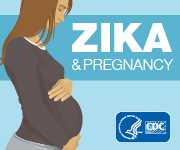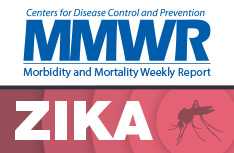Disinsection
Technical Statement on the Role of Disinsection of Airplanes or Ships in the Context of Zika Outbreaks, 2016
Key Points
- CDC does not recommend routine use of insecticides (disinsection) inside commercial passenger airplanes or on ships to prevent the spread of Zika virus.
- An infected person is the most common source for imported mosquito-borne viruses with a human-mosquito-human transmission cycle.1
- Public health interventions for travelers should focus on preventing mosquito bites while in areas with Zika virus outbreaks and on return from those areas (for 3 weeks following return).
- Routine, established efforts to control or eliminate mosquitoes in and around airports and seaports should be followed.
Use of Disinsection in Airplanes to Control the Spread of Zika Virus
- The World Health Organization (WHO) convened an Advisory Group on aircraft disinsection in Geneva during April 2016 to discuss the role of disinsection in the spread of Zika virus. In the context of Zika virus, WHO stated: “Effectiveness of disinsection was considered low for preventing pathogen importation, as there is a low risk of importation by mosquito vectors compared to infected travelers.” However, WHO continues to recognize a possible role for disinsection in certain circumstances and advises countries to conduct a risk assessment before instating requirements. It is therefore possible that individual countries may require disinsection of aircraft originating from countries with Zika outbreaks.2
- It is thought that the probability of any mosquito being on an airplane is low (and perhaps even lower for an infected mosquito).3
- Given the use of air conditioning and the relatively brief period for potential exposure, the risk of travelers becoming infected on board an airplane through the bite of an infected mosquito is considered to be lower than their risk of being bitten by an infected mosquito while they were in affected areas.
- There is no evidence to show that using insecticide to kill mosquitoes inside aircraft cabins is effective in preventing introduction and spread of mosquito-borne diseases.
- Given lack of efficacy, drawbacks to consider include possible adverse health effects (including allergic reactions) in crew members or passengers, damage to aircraft materials, and objections by passengers and crewmembers.4, 5 The issue of emerging resistance to insecticides among mosquito species is another factor to weigh when considering disinsection.6
- There are currently no products approved by the Environmental Protection Agency for disinsection inside an occupied aircraft cabin.7
Use of Disinsection on Ships to Control the Spread of Zika Virus
- Inspection and disinsection of cargo containers are difficult and not effective mechanisms to prevent importation of Aedes aegypti or Aedes albopictus mosquitoes or Zika virus.8
- The most common way for Aedes aegypti or Aedes albopictus species mosquitoes to travel long distances is as unhatched eggs. Disinsection with conventional insecticides will not kill the eggs, which are resistant to insecticides.
- Cargo containers are unloaded rapidly from ships and might not be opened at the port but at other locations.
- These factors decrease the effectiveness of disinsection and in many instances make it infeasible.
- Ship operators, seaports, and importers should collaborate to eliminate sources of standing water that serve as places where mosquitoes can lay eggs as part of routine operations, but this should not be considered a significant countermeasure to prevent the spread of Zika virus.
Although CDC has the authority to require disinsection under parts 70 and 71 of title 42 of the Code of Federal Regulations, disinsection is not currently required for airplanes or ships arriving at US ports of entry.9 For more information, see Questions and Answers about Disinsection and Zika for the Shipping Industry and Partners and Questions and Answers about Zika for the Airline Industry and Partners.
Humans are the Most Common Way for Zika Virus to Enter a Country
- The most common way that Zika virus enters a country is by introduction of the virus to the local mosquito population by an infected traveler.
- Mosquito-borne viruses, such as dengue, chikungunya, and Zika, spread internationally primarily through infected people. This can occur when an infected person goes to a different country and is bitten by uninfected mosquitoes that then become infected. The newly infected mosquito population can then spread the virus.
- Mosquito species that can transmit the Zika virus (Aedes aegypti and Aedes albopictus) are found in many parts of the United States, so infected people arriving in the United States could be bitten in their homes or residential areas by mosquitoes, which could result in local spread.
- For these reasons, areas where these mosquitoes are located or where Zika virus is spreading should focus on local mosquito control and other prevention efforts, such as encouraging returning travelers to take measures to prevent mosquito bites.
Summary
CDC does not recommend disinsection inside commercial passenger aircraft or on ships as an effective approach to control the movement of Zika virus over long distances, such as from one country to another. CDC recommends that other local public health interventions should be the primary focus to prevent local transmission of Zika virus.
References
- SM Ostroff. The Role of the Traveler in Translocation of Disease. CDC Health Information for International Travel, 2016 Yellow Book.
- WHO Ad-hoc Advisory Group on aircraft disinsection for controlling the international spread of vector-borne diseases, Geneva, Switzerland, 21 to 22 April 2016.
- L Mier-y-Teran-Romero, AJ Tatem, and MA Johansson. Introduction of mosquito-borne diseases into non-endemic locations: infected human travelers versus mosquitoes. International Conference on Emerging Infectious Diseases [PDF – 300 pages]. August, 2015. Atlanta, Georgia, p. 261.
- CDC NIOSH. Aircrew Safety & Health. Pesticides – What you need to know.
- Advisory Group for Aerospace Research & Development. Aircraft disinsection: A guide for military & civilian air carriers. 1996.
- N Liu. Insecticide resistance in mosquitoes: Impact, mechanisms, and research directions. Annual Review of Entomology. Vol. 60: 537-559 (Volume publication date January 2015) DOI: 10.1146/annurev-ento-010814-020828
- EPA PRN 96-3: Pesticide products used to disinsect aircraft. 1996.
- EU SHIPSAN ACT. Interim guidance on maritime transport and Zika virus disease. [PDF – 20 pages] 2016.
-
Code of Federal Regulations; Title 42 Public Health; parts 70 and 71.
- Page last reviewed: September 1, 2016
- Page last updated: September 1, 2016
- Content source:





 ShareCompartir
ShareCompartir